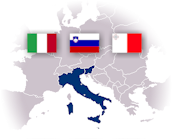

Reactivity
Human
Source / Host
Human
Specificity
Human Prostate Carcinoma Epithelial Cells
Shipment
BLUE ICE
Long Term Storage
-20°C
Shelf Life
Stable for at least 1 year after receipt when stored at -20°C.
Description
Cell lysate. Liquid, contains lithium dodecyl sulfate (LDS) at pH 8.4. Human Prostate Carcinoma Epithelial Cells. The 22Rv1 cell line is a human prostate carcinoma cell line that was established from a xenograft initiated by the inoculation of a hormone-refractory prostate cancer cell line, CWR22, into athymic nude mice. The CWR22 xenograft was derived from a primary prostate carcinoma. Upon regression after castration and subsequent relapse, the 22Rv1 cell line was established from the relapsed tumor, which exhibited androgen-independent growth. 22Rv1 cells express the androgen receptor (AR) and prostate-specific antigen (PSA), essential markers in prostate cancer research and therapeutic targeting. Notably, this cell line contains a variant form of the AR known as AR-V7. This splice variant lacks the ligand-binding domain, enabling it to remain constitutively active and contribute to the androgen-independent proliferation of 22Rv1 cells, a critical aspect of castration-resistant prostate cancer (CRPC). The 22Rv1 cell line is extensively used to investigate the mechanisms underlying the transition from androgen-dependent to androgen-independent prostate cancer growth, a key challenge in the treatment of advanced prostate cancer. 22Rv1 cells have facilitated significant advancements in understanding the molecular biology of CRPC, including the role of AR variants in resistance to androgen deprivation therapy (ADT) and the development of novel therapeutic strategies aimed at overcoming this resistance. In summary, the 22Rv1 cell line, serves as a critical model for studying CRPC. Exhibiting androgen-independent growth, these cells express key prostate cancer markers such as AR and PSA, and notably contain the AR-V7 variant, which is constitutively active due to the absence of the ligand-binding domain. The 22Rv1 cell line's unique properties make it invaluable for exploring the transition from androgen-dependent to independent growth in prostate cancer, and thereby aid in the development of new therapeutic approaches to tackle advanced stages of the disease.
ESCLUSIVAMENTE PER USO DI RICERCA (RUO) e non per uso terapeutico o diagnostico su uomini o animali. Il prodotto NON è un Dispositivo Medico o un Diagnostico in Vitro.
PRODUCT FOR RESEARCH USE ONLY (RUO) and not for therapeutic or diagnostic use on humans or animals. The product is NOT a Medical Device or an In-Vitro Diagnostic (IVD).



